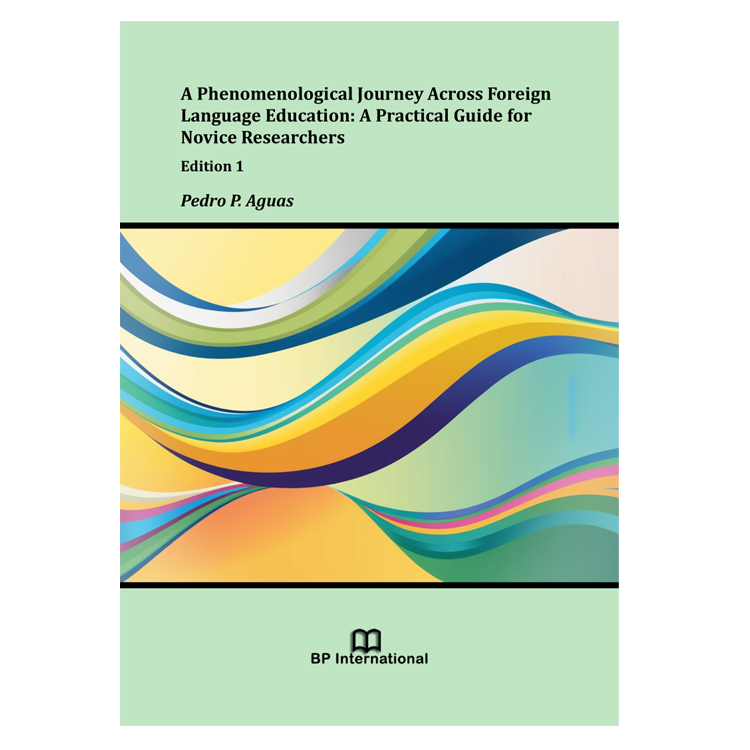Research on foreign language curriculum innovation has leaned towards qualitative approaches with the adoption of phenomenology and hermeneutics. There is a plethora of books on phenomenological and hermeneutic research; however, literature on how to conduct phenomenological hermeneutic research as a dialectical continuum in practice is limited, namely in the broad area of the foreign language curriculum. This book advances a practical model for conducting phenomenological hermeneutic research in education and social sciences at large.
All books have their own story. This one came to life as the result of a structural transformation of the last three chapters of my doctoral dissertation required by the University of Phoenix. In order to write this dissertation, I was inspired by a casual conversation with an official representative of the Colombian Ministry of Education in 2008. Her point was that despite the national governments’ numerous attempts at improving the quality of foreign language education in the country, both public and private educational institutions’ innovative initiatives continued to be unsuccessful. This concern permeated the entire doctoral dissertation. The research proposal, which was originally formulated as an ethnographic study, resulted in a phenomenological hermeneutic investigation as it unfolded with help, first from my mentor and after that from my dissertation committee members.
The book is intended for novice researchers and practitioners at large who are not familiar with the nature and methodological components of phenomenological research. At a lower level, the book may be useful as a reference textbook for undergraduate courses in qualitative research methods, namely in education. What is the best way to conduct phenomenological research? There are many, but Phenomenological Hermeneutic Research Design in Practice: A Guide for Novice Researchers takes one –the dialectical fusion of phenomenology and hermeneutics. What follows is the organization of the books in terms of chapters, sections, and subsections.
Chapter 1, “Introduction,” establishes the theoretical orientation to human science and human research in this book, based on well-known phenomenological philosophers. The chapter also includes common characteristics of qualitative traditions in terms of fundamental aspects. An overview of phenomenology and hermeneutics is presented to provide the reader with the evolution of the phenomenological movement since its very beginning. Also included is a theoretical sketch of my approach to phenomenological hermeneutic research. This is followed by a brief rationale for this research strategy. Key concepts in phenomenological hermeneutic research are considered as well. Examples from the author’s doctoral dissertation will illustrate the various phenomenological research issues discussed throughout the book.
Chapter 2, “The Ontology, Epistemology, Axiology, rhetoric, and Methodology of Phenomenological Hermeneutic Research” presents a conceptual framework for understanding phenomenological hermeneutic research along with the specific focus of the approach proposed in this book. The contribution of key researchers to the construction of my approach is highlighted. The chapter concludes with a rationale for the prevalence of phenomenological hermeneutic research.
Chapter 3, “Designing a Phenomenological Hermeneutic Research Project,” is practical in nature in the sense that it outlines and defines the various components of the phenomenological hermeneutic project. Examples from diverse researchers illustrate each component. A section on ethics in phenomenological hermeneutic research is included to encourage researchers to tackle research activities professionally and with a high level of integrity. An example of informed consent from my own study is provided along with a template for writing a phenomenological hermeneutic research prospectus.
Chapter 4, “Collecting the Data,” describes the basic elements of the data collection process in light of my own phenomenological hermeneutic research study. Elements such as population, sampling frame, research sites, data collection methods, instrumentation, pilot study, validity, reliability, authenticity, phenomenological interviewing, focus groups, and the researcher’s diary are discussed. Examples of some of these elements from my own study are provided.
Chapter 5, “Analyzing the Data,” describes my approach to phenomenological hermeneutic data analysis step by step. The various steps are summarized in four core stages, Stage Four being the focus of Chapter 6. All stages are illustrated with examples from my own study.
Chapter 6, “Writing the Results,” presents the findings of the phenomenological hermeneutic research study in an easy manner. The issue of validation as an expression of validity and trustworthiness of a research study through methodological triangulation is included. Examples of the entire content of the findings are provided in the form of themes, textural descriptions, structural descriptions, and a composite description of phenomenological experience.
Chapter 7, “A Novice Researchers’ Voice on Reflective Diaries” reflects the researcher’s voice on a reflective diary as an effective tool for understanding and learning from doing phenomenological hermeneutic research. Three key issues as the focus of the reflection are tackled. These three issues are prior experience as a researcher, bracketing, and reflexivity.
Chapter 8, “Conclusion,” is the end of the book. The core theme of this chapter is the need to do phenomenological hermeneutic research on the grounds of foundational aspects of phenomenology as a branch of philosophy and sound principles of research methodology. The chapter also represents a methodological summary of my approach to the major issue of phenomenological research. Another issue raised in the chapter is the need to capitalize on the experience of doing phenomenological research by using reflection as a writing tool.
Embarking on the journey of creating a book about phenomenological hermeneutic research became hard intellectual work, and included not only the actual writing of the book but also a decision-making process. Defining the number of chapters, identifying what parts of the dissertation needed to be turned into sections of a chapter in the book, and determining whether any section of the dissertation needed expansion based on information from other chapters was an intensive task. This task also included a careful review of the literature on the introduction topic to make it thorough and ground-breaking. I hope that both novice and experienced researchers take advantage of the content of this book, use it as a practical learning tool, and start doing their own phenomenological research projects.





